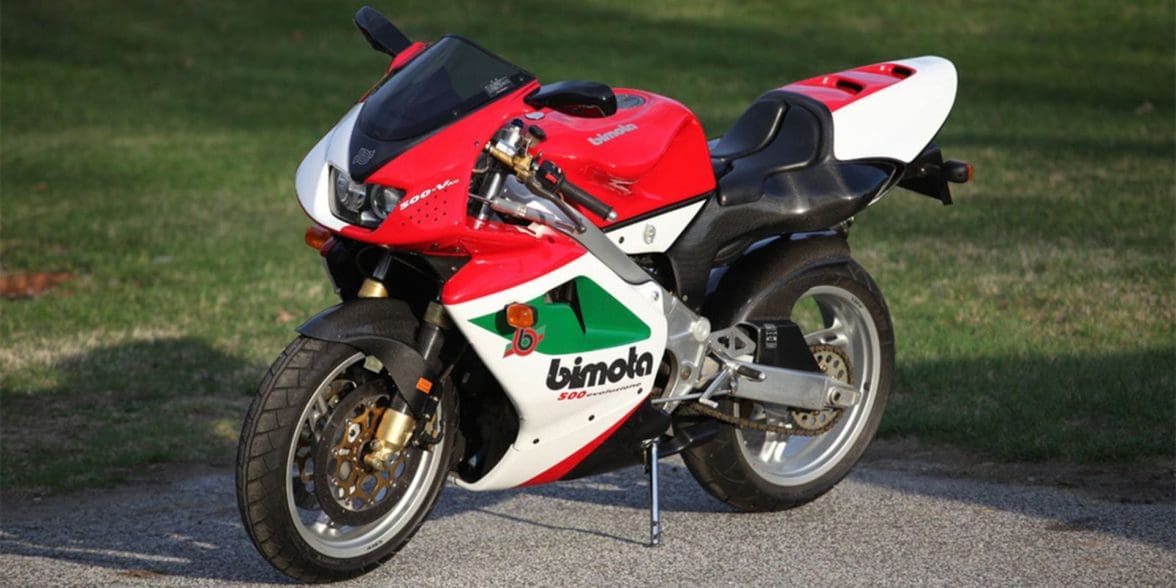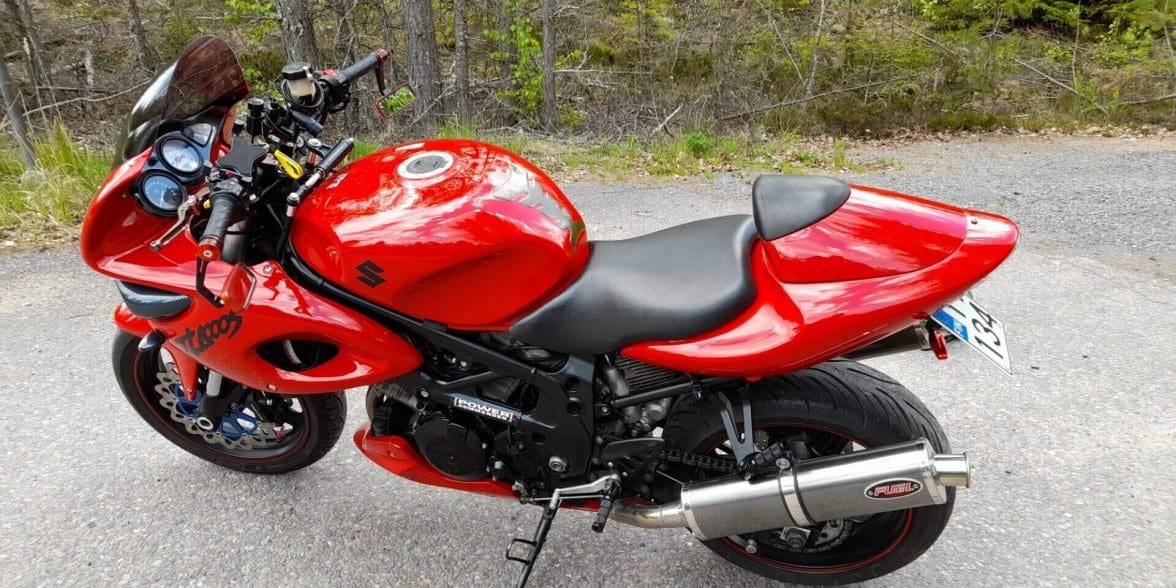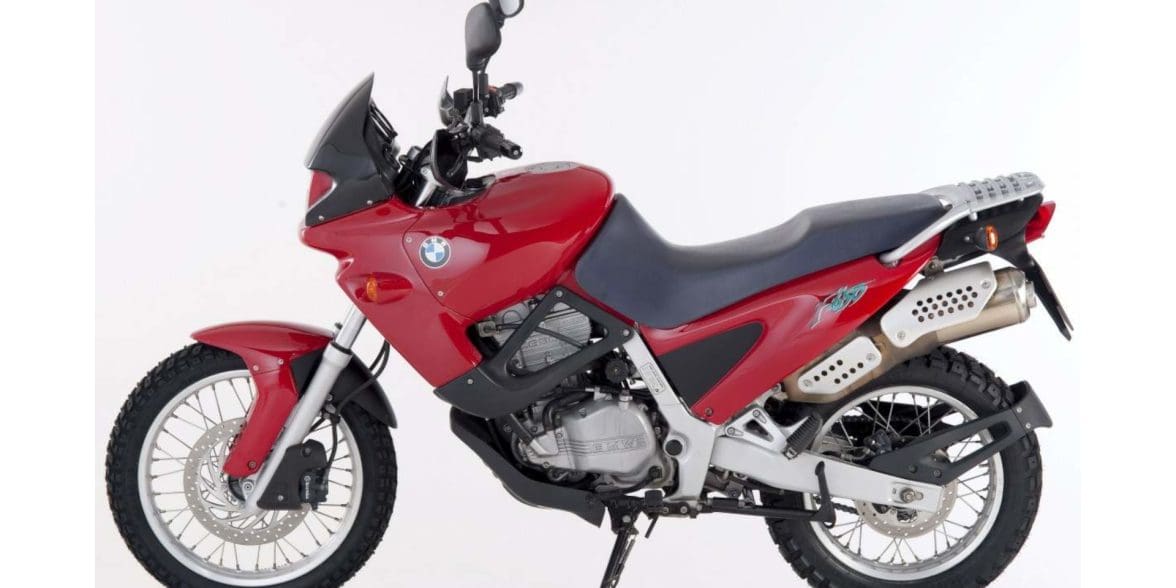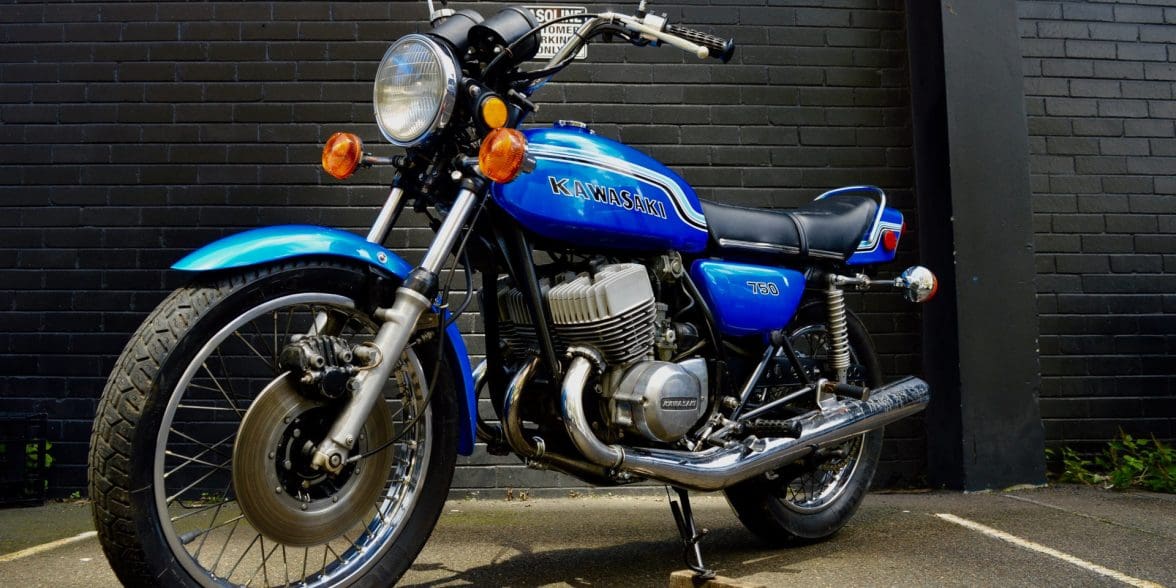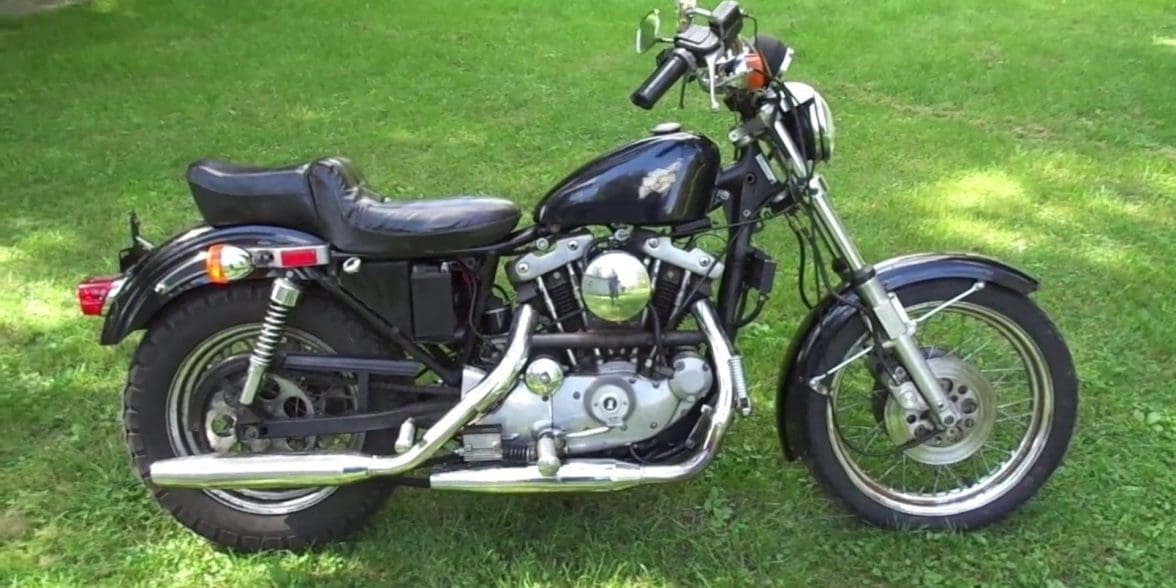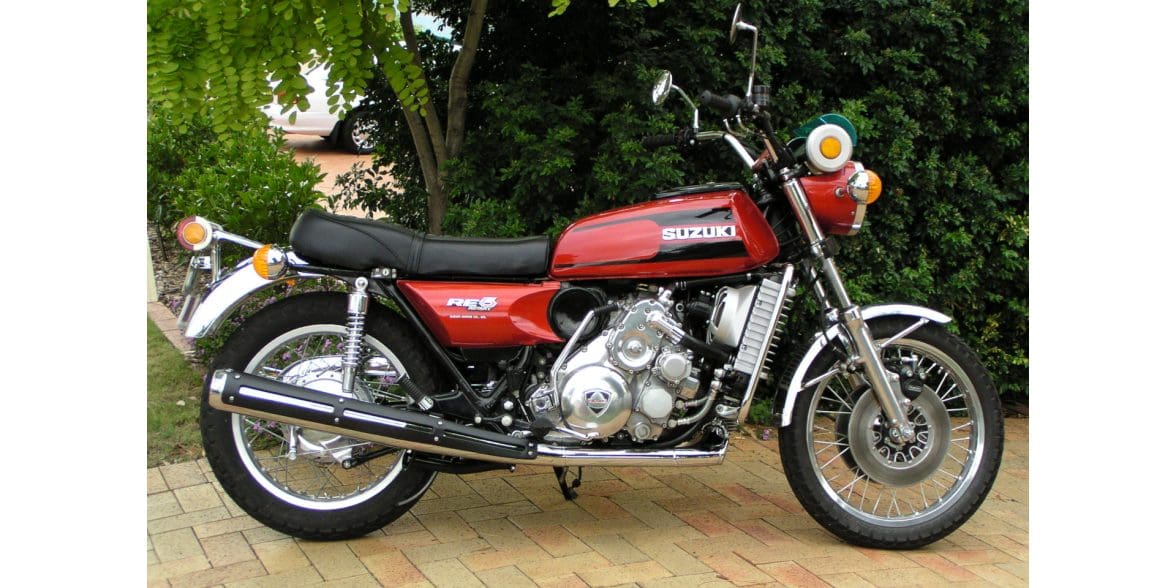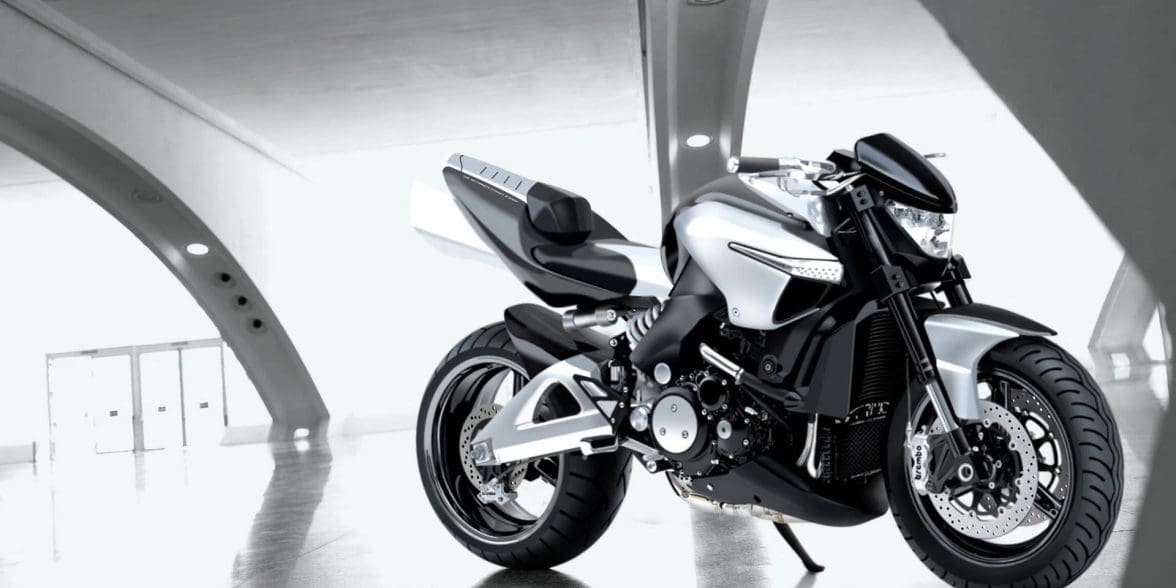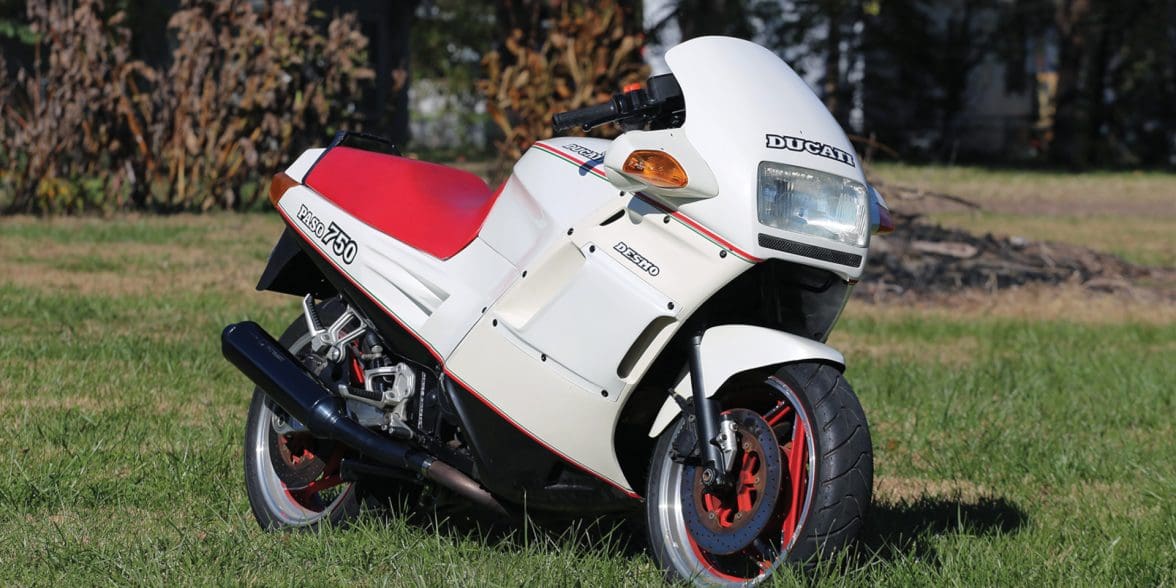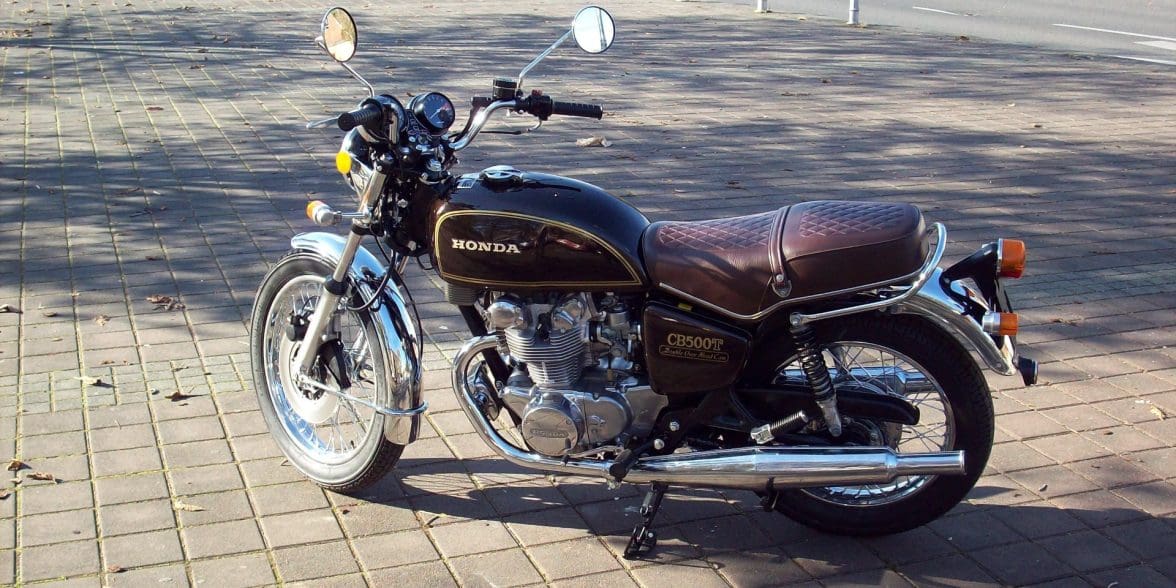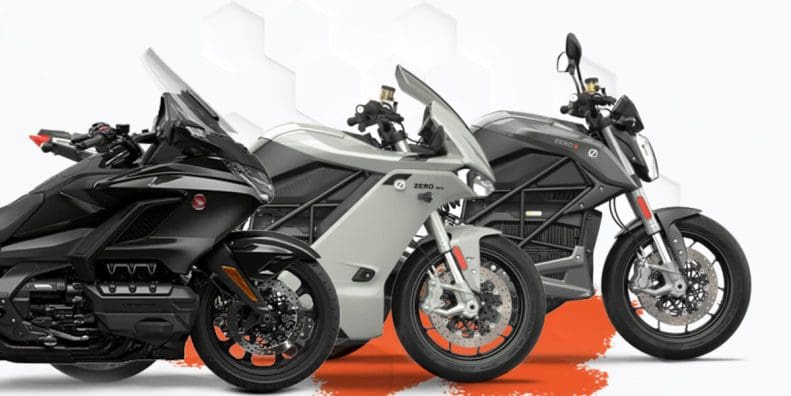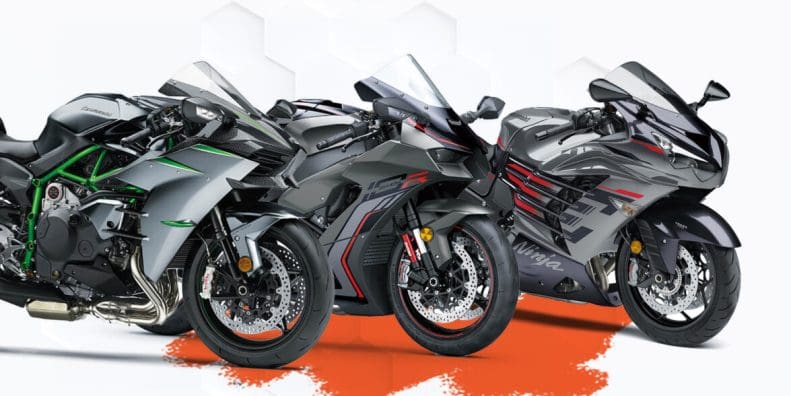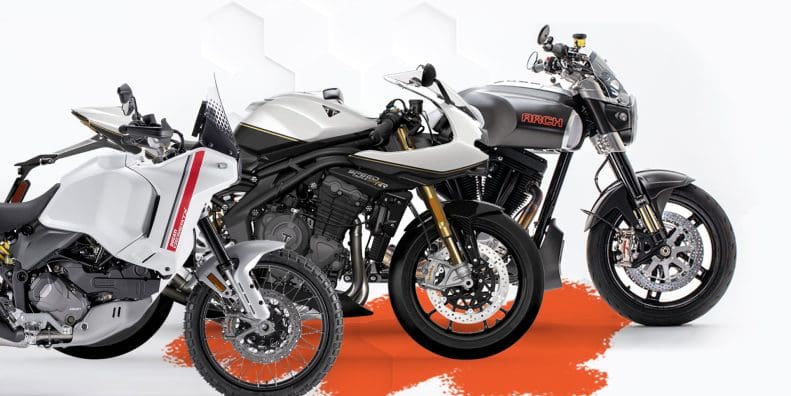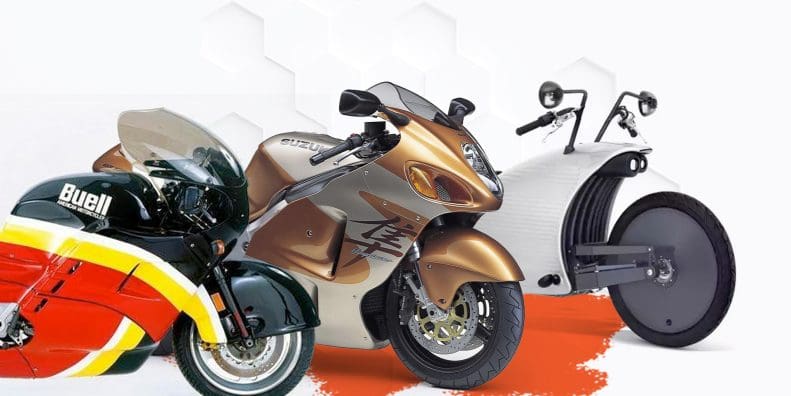The Worst Motorcycles Ever Made [2024 Edition]
Updated September 26, 2023 by Simon Bertram
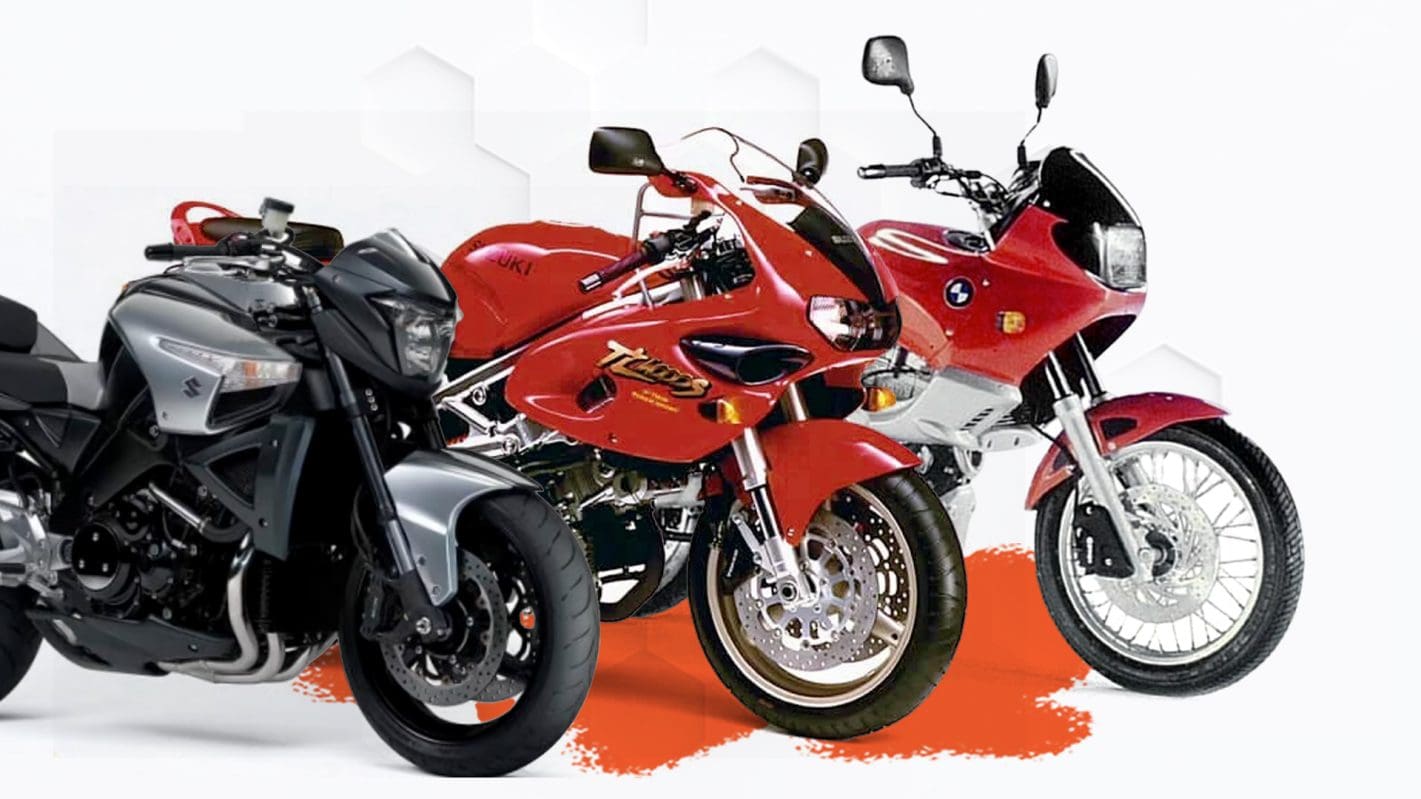
Dangerous, Disastrous, Despicable, & Many Other Adjectives
Article Quick Nav
These are some of the worst bikes that have ever been made:
Newton's Third Law states that for every action, there is an equal and opposite reaction. Adapting it to motorcycles as a metaphor is pretty easy, as for every great bike that is out there, there must always be one that fails so horribly that it makes you wonder how it even got approved in the first place.
There have been examples of these clunkers from the very first days of motorcycles, although they really started to rear their heads during the 1970s. This was during the time when parallel twins took off, when triples were the most advanced motors, and when the UJM sport bike was making its inroads into America. Manufacturers were pushing the boundaries of engineering and design, and more often than not, those efforts fell off the steep side of a vertical cliff.
This is by no means a complete list, as we'd be here for a year trying to write up that list. Instead, we've each put in a vote for the worst bikes ever made, and after some discussion, have come up with the nine worst ones we can think of, and why.
About Our Selections
These selections had one criteria: That they were motorcycles. Bad motorcycles. Nothing else mattered
1997 Bimota V-Due
A bike so bad it killed a company
Why We Picked It:
By 1997, two-stroke engines were on the very cusp of being replaced in all segments except motocross and some dirt bikes. They were oil-hungry, noisy, difficult to maintain if there was more than one cylinder involved, and while they did provide a lot of power, it couldn't compare to a fuel-injected four-stroke.
So, when Bimota annouced that they had made a clean-burning two-stroke V-twin, the V-Due, that used direct injection, people paid attention. They were promised reliability and greater fuel efficiency, without the need to burn as much oil, and a superb power output of 105 HP and 66 lbs-ft of torque.
Too bad, then, that the V-Due engine turned out to be a hot, steaming pile of garbage. The fuel injection system sometime worked, sometimes didn't, meaning the rider had no power, or suddenly all of the power, usually when trying to crank the wrist to get to the power. Since traction control on motorcycles wasn't even really a thing on cars at the time, many rear wheel spin-ups happened as the power suddenly came on.
Bimota tried to recover from the unmitigated disaster that was the V-Due, but after a few failed attempts to make it better, the costs of trying to make the engine work ended up bankrupting the company.
Specifications:
Price: $20,275 in 1997 ($38,785 in 2023)
Engine: 499cc two-stroke V-twin
Power: 105 HP
Torque: 66 lbs-ft
Transmission: 6 Speed Manual
Curb Weight: 377 lbs
Weaknesses:
Had a V-twin engine that was attempting to save two-stroke sport bikes for the road, but ended up being so bad that attempts to fix it killed the company
Ridiculously expensive, even in 1997
Power delivery via the fuel injection system was almost binary, in that you either had every single HP, or you had zero.
Learn More:
1997 Suzuki TL1000S
A bike that looked great on paper was a disaster on the roads
Why We Picked It:
Imagine the excitement when Suzuki announced plans to develop a proper superbike sporting one of the most advanced and powerful V-twins that the fabled Japanese company had ever made. What's not to like? Pre-orders were placed sight unseen, and in 1997, the TL1000S finally made it to customers eager hands.
Don't get us wrong, the bike was competent, the engine was powerful, and the engineering behind it was good... except for the rear swingarm. To fit the hefty 996cc V-twin, with 125 HP and 77 lbs-ft of torque, into the frame, the rear suspension could not go in its primary centerline position under the seat. Instead of just mounting a side shock, Suzuki instead decided to take an idea from 1990s F1 cars and use a right side mounted spring with a remote rotary-style damper that used a complicated set of spinning arms, some valves, and a couple drops of hydraulic fluid.
The result, however, was once that system was through the break in perior of about 600 miles, it simply did not work. Any major movement of the rear swingarm overheated the hydraulic fluid in the damper, and it became about as supportive as cloud. Pair that with a big, torque-monster V-twin putting power to a sagging rear wheel, and you had a bike that was about as steady and reliable as a drunk squirrel. The fact of the matter was it was too complicated, did not use enough fluid, and was not made of the same high peformance materials that F1 cars used, so the TL1000S was quietly shuffled off the market in 2001.
Specifications:
Price: $8,999 in 1997 ($17,214 in 2023)
Engine: 996cc V-twin
Power: 125 HP
Torque: 77 lbs-ft
Transmission: 6 Speed Manual
Curb Weight: 412 lbs
Weaknesses:
"World's best tank slapper"
Used a needlessly complex rear suspension setup that would overheat if shown any bumps in the road
Very powerful engine pushing a bike without proper suspension setup could have the rear stepping our all over the place
Otherwise was a good bike, but the suspension doomed it to the scrap heap of history
Learn More:
1997 Suzuki TL1000S WikiPedia page
1993 BMW F650 Funduro
Meant to be a new type of dual-sport that was equally fun on and off road, it wasn't.
Why We Picked It:
BMW was riding a wave of good press, great reviews, and amazing bikes in the early 1990s. They had established two new classes of motorcycles, the sport adventure tourer and the off-road ready ADV. So, naturally, BMW had the brainwave of "What if we make a bike that is both?" To help design and market the bike, BMW joined forces with Aprilia and the two companies got to work.
The result was the F650 Funduro, which came in a variety of styles, including a Strada version for mostly on-road use, and a GS version for ADV enthusiasts. It was to be as light as an enduro, reliable as a sport adventure tourer, as rugged as an ADV, and be able to balance all of that perfectly. Here's a slight revelation: It didn't.
What customers instead received was an anemic, unreliable thing that had an extremely dangerous flaw: The head bearings were so poorly designed and manufactured that they could seize the engine midride. It also sported a rear mono-shock that had the damping capabilities of an inflatable bouncy castle, fuel injection that worked if it felt like it, and most of the weight lifted way up high to give it the ground clearance needed for off-roading. At 398 lbs wet, that made it very top heavy, which is the exact opposite of what you want off-road, as low-speed handling on dirt or gravel would send you face first into the road faster than you could blink.
It was very quickly evolved in 1995 to what we would call a "standard" F-series ADV today, but for those first couple of years, it was horrid.
Specifications:
Price: Unknown, no reliable source found
Engine: 652cc four-stroke single
Power: 48 HP
Torque: 42 lbs-ft
Transmission: 5 Speed Manual
Curb Weight: 417 lbs
Weaknesses:
While it would quickly evolve into a proper entry level ADV, for the first couple of years it had an extremely dangerous tendency for the engine to either seize or stall out
Had woefully inadequate rear suspension at first
Fuel injection was spotty, despite BMW being one of the companies at the forefront of fuel injection in cars
Dangerous off-road at lower speeds
Learn More:
1972 Kawasaki H2 Mach IV
A prime example of too much power in a frame not built to handle it properly. One of the most dangerous motorcycles ever made.
Why We Picked It:
In the 1970s, "safety" was a word that was passed around sometimes, but was at about 10th or 15th on the list of what a motorcycle should do. Kawasaki had already released one disaster, the 500cc H1 Mach III that broke more bones than it did speed records, and thought "Nah, not powerful enough, give it a 750cc engine!"
That bike was the H2 Mach IV, with a 748cc two-stroke triple pushing out 74 HP and 57.1 lbs-ft of torque. That engine hung in almost the exact same frame that the H1 used, meaning that it would have been stiffer if the frame had been made out of rubber bands. It had a front fork with shocks so thin that they couldn't really support the weight of the bike, a single disc brake on the front wheel with a drum in the rear, neither of them sport-spec, and had its rear wheel too far forward, giving a very nasty rear weight bias.
Kawasaki's argument was that it was capable of an astonishing 125 MPH. What they didn't mention that once you went above 3,500 RPM there was a torque cliff as tall as El Capitan in Yosemite, and a spontaneous, unexpected wheelie was common. It weighed 420 lbs, so even if you wanted to prevent looping the bike, it was a 50/50 chance you would end up flat on your ass skidding down the road.
When even professional racing riders wouldn't touch the bike with a ten foot pole and wanted nothing to do with it, you know a bike is too dangerous to ride. Evolutions were quickly made for 1973 and 1974, but that disastrous first year in 1972 doomed the bike to low sales, and it was simply killed off in 1975.
Specifications:
Price: $1,386 in 1972 ($10,180 in 2023)
Engine: 748cc triple
Power: 74 HP
Torque: 57.1 lbs-ft
Transmission: 5 Speed Manual
Curb Weight: 452 lbs
Weaknesses:
Earned the nickname "The Widowmaker"
Frame, suspension, brakes... they were all woefully inadequate for the sheer power the bike tossed out
If you cranked it open even a little bit, it would surge the power so hard that it would power wheelie uncontrollably
Despite evolutions to make it safer, it was a death trap every year it was sold
Wheelbase was very short, giving it very dart-y handling, and also allowed for the riders' body weight to help push the bike into a loop during a power wheelie
Learn More:
1980 Harley-Davidson Sportster (XLS1000 Roadster)
In the Harley dark ages, this was a motorcycle that was so disastrously underpowered and overpriced it almost killed off the Sportster line
Why We Picked It:
Brand loyalists don't really want to admit it, but from the mid-1970s to the mid-1980s, Harley-Davidson went through a very dark time. Union issues, tanking sales, reliability and quality control being buzzwords instead of policies... it was bad. Really bad.
The Sportster was still, by some miracle, selling, but just before the company was rescued by a group of investors lead by Willie G. Davidson himself, they released the single worst Sportster model to ever turn wheels on American roads. Selling at a whopping $5,867 in 1980, or $21,860 in 2023 money, it had a 61 cubic inch V-twin that put out an anemic 57 HP and 55 lbs-ft of torque, trying to motivate a bike weighing 540 lbs.
Engine bushings were an afterthought, so it wasn't even particularly surprising for one of these death traps to shake itself to pieces on the ride home from the dealership. It had the seating position and bars all wrong, and without that confident connection to the bike and road, riders couldn't actually feel how lethargic and cumbersome the bike was until they were already in the hedge at the side of the road.
It was also the first year without a kick-starter backup, using only electric starter motors, and they proved to be about as reliable as a house on fire around an unlit wood burning stove. Harley-Davidson was at most 24 months away from completely collapsing, and it was only through the last minute buyout by the investment group mentioned earlier that the company still exists today.
Specifications:
Price: $5,867 in 1980 ($21,860 in 2023)
Engine: 998cc (61 ci) V-twin
Power: 57 HP
Torque: 55 lbs-ft
Transmission: 5 Speed Manual
Curb Weight: 540 lbs
Weaknesses:
First year without a secondary starter, and the electric starter was unreliable
Front suspension was nearly nonexistent
Seat was too far forward with bars that pulled back almost to the point the pillion rider could use them
Very lethargic and cumbersome
Rattled and vibrated harder than an earthquake
Learn More:
1974 Suzuki RE5
Another one of those bikes that sound amazing on paper, but was an unmitigated disaster on the road
Why We Picked It:
Suzuki really is the company that will try everything once. They're the company that doesn't get invited to a buffet, because they'd need 17 plates to carry everything they want to sample. One of their most daring and, frankly, strange bikes was the 1974 RE5.
The name of the bike really does give it away, but for those that are not in the know, it stands for "Rotary Engine, Model 5." On paper, it seemed like a match made in heaven: A super-high revving Wankel rotary engine from NSU in Germany, mounted in a sporty frame, driving the bike forward at breakneck speed.
Many reviews praised the handling and confident road manners, but the disaster that was the RE5 always waited until the 12 month warranty expired. The thing about rotary engines in the 1970s was that the ceramic apex seals from the 1980s had simply not been invented yet, so if one of the seals failed just slightly, the engine would implode. Due to the complexity of the engine, you couldn't just change the rotor, you had to replace the entire thing. As well, once the novelty of the rotary had worn off, interest in the bike plummeted, and so in 1976, after only 48 months on the market, the RE5 ceased production.
Specifications:
Price: $2,475 in 1974 ($15,413 in 2023)
Engine: 497cc single rotor Wankel
Power: 62 HP
Torque: 55.6 lbs-ft
Transmission: 5 Speed Manual
Curb Weight: 573 lbs
Weaknesses:
Engine was very unreliable
Apex seals were the #1 culprit of engine issues. Due to the complexity of the engine, the only solution was to replace the whole thing, which could cost up to $400 in 1974, which is $2,461 today
Was an otherwise OK bike, but didn't have enough pull to grab interest away from traditional motorcycles for long
Learn More:
2007 Suzuki B-King
What started out as a good idea was dead on arrival when it finally released three years after its original street date
Why We Picked It:
By this point, we are applauding Suzuki because if no one else did the weird, wacky, and crazy motorcycles, the world would be a much more boring place. The Suzuki B-King is probably the prime example of that, a bike that could have been great... had it not been delayed.
Originally shown at the Tokyo Motor Show as a concept variant of the Hayabusa, onlookers were drawn to the sport naked bike that promised 240 HP, made out of exotic materials, draped in carbon fiber, and it looked like Batman had styled it. It was to have a computer that could provide self-diagnostics, advanced track telemetry, GPS based weather and traffic warning systems, and all of this was to be displayed in a HUD inside the helmet that Suzuki proposed as an option to buy with the bike. It even was even started by a biometric ignition system, pressing your thumb against a scanner to unlock the bike and fire it up.
It seemed way too good to be true, and as the expected release date of 2004 came and went by without a peep, people started to wonder. It would take three more years, but the B-King was released in 2007, and absolutely nothing promised had made to the road except the looks. The fancy electronics? Replaced with a modified ECU from the Hayabusa. The power? 164 HP. The looks? Cutting edge in 2001, old hat by 2007.
It ended up overweight, had poor handling, lacked the promised power, and was overall just a bad bike that had been hyped up too much to ever really be able to meet the expectations that surrounded it.
Specifications:
Price: $12,899 in 2007 ($19,101 in 2023)
Engine: 1,340cc inline four
Power: 164 HP
Torque: 97.2 lbs-ft
Transmission: 6 Speed Manual
Curb Weight: 578 lbs
Weaknesses:
Was massively overhyped, overpromised, and underdelivered
Got stuck in development hell as Suzuki worked to live up to all the fancy promises, but in the end had to revert to basic, standard motorcycle electronics
Weighed almost as much as a second generation Hayabusa, with less fairings and equipment
Styling was very turn of the century, when "angular curves" were the design language of the day
Learn More:
1986 Ducati Paso 750
A "What the hell were they thinking?!" motorcycle that in all honesty should have been killed off at the prototype stage
Why We Picked It:
Yes, Ducati has actually made some pretty shockingly awful bikes, but none of them, not a single one, has ever been able to match the catastrophic Paso 750 from the mid-80s.
The challenge at the time was to produce a top-tier bike to challenge against the tidal wave of Japanese sport bikes that were stepping on Ducati's toes when they weren't even invited to the dance, at least as far as the Italians saw it. It was such a big project that they hired Massimo Tamburini, the same designer that penciled the unbelievably gorgeous lines of the Ducati 916 superbike.
His choice was to streamline a powerful 750cc L-twin engine in an aerodynamic body, using a fully enclosed fairing instead of just side fairings. He also turned the engine "backwards" so the horizontal cylinder of the L was firing towards the rear wheel instead of the front. Since this moved the engine forward, it encroached into the bottom of the gas tank, so part of the gas tank was below the carburetor, necessitating an auxiliary fuel pump, and necessitated replacing the seperate Dell'Oro carburetors with a single Webber one between the cylinders.
That, however, caused one sales-killing issue: The fuel pump often moved too much fuel, and the carburetor would flood, stalling the engine, especially in low speed running. The secondary issue this caused is that since the mechanical bits were fully enclosed, the carburetor would often overheat, and could get stuck in a choke open position even if the choke wasn't pulled.
Basically, the only thing the Paso 750 did right was look good. At basically every other step, it was catastrophically flawed.
Specifications:
Price: ~$7,000 in 1986 ($19,610 in 2023)
Engine: 748cc Desmodromic L-Twin
Power: 73 HP
Torque: 52 lbs-ft
Transmission: 5 Speed Manual
Curb Weight: 460 lbs
Weaknesses:
Changes made to the 750 Desmo L-Twin from the F1 750 made it rely on a single carburetor to feed both cylinders
Fully enclosed fairings did not allow enough air through to cool the oil, fuel pump, or carburetor, to the point the choke could pop open from heat expansion and stall out the engine
Positioning of the L-Twin so far forward impeded on the underside of the fuel tank. Had to use a fuel pump to feed the carburetor, but that pump was finicky and was prone to flooding the carburetor
Sold so poorly (4,863 units in its entire lifetime) that it was quickly killed off after just 48 months and replaced by the much better designed Paso 906
Learn More:
1975 Honda CB500T
If you had any fillings, one ride of this bucket of bolts would shake them all loose
Why We Picked It:
Even Honda has made a few bikes it wishes it hadn't, but in the 1970s, with the relative success of the CB450T sport model, the suits in the boardroom at HQ wanted to capitalize. So they sent down an order to modify the 450 engine to a 500cc model, and, oh, to do it as "cost efficiently" as possible.
The truth about the CB450T was that it had a lot of sympathetic vibrations through the frame, but it was just, just below the annoying or uncomfortable level. Because the Honda engineers weren't allowed to make an all new 500cc engine, they took the 450cc unit, stroked it out, replaced the roller bearings with big ball bearings to "extend" the life of the engine, and didn't even modify the head unit, using it bone stock from the 450.
Because of that, they had to drop the compression from 9:1 to 8.5:1, mostly to allow it to use the cheapest gas possible, as the oil crisis was just kicking into high gear in 1975. Oh, and there was no real need to change out the 32mm carburetors, they should be just fine.
Add to that the rubber bushings, rubber handlebars, and rubber seat mounts were all of the cheapest, nastiest grade rubber possible. As a result, the CB500T vibrated like it had 17 cups of coffee and was trying to make its molecules separate at the speed of light. Even a short ride on the bike was so uncomfortable, shaking so violently, that if you had any fillings, they'd have been knocked loose.
Because the boardroom dictated the engineers make the bike, but then tied both hands behind their back and made the design it with their feet, the bike failed. Miserably. All the bike needed to succeed was something that already existed, and with more freedom, the engineers could have installed it: A counter balancer on the crank.
Specifications:
Price: $1,545 in 1975 ($8,817 in 2023)
Engine: 498cc parallel twin
Power: 34 HP
Torque: Unknown
Transmission: 5 Speed Manual
Curb Weight: 425 lbs
Weaknesses:
Was a bike ordered from the boardroom, not designed and proposed by designers and engineers.
Due to the oil crisis, was made as cheaply as possible to also run on the roughest octane levels of gas possible
Rubber used was the cheapest that could be sourced, and was extremely stiff, nullifying any absorption qualities
Vibrated so much that it became unbearable to ride at any speed over 50 MPH
The solution that could have made it a decent bike would have been a counter balancer on the crankshaft, but the engineers' hands were tied


